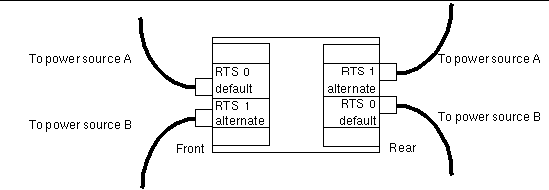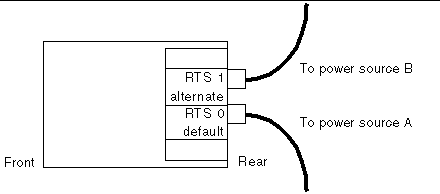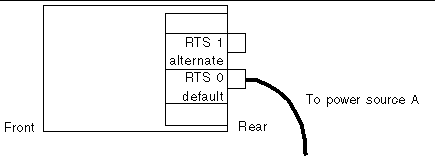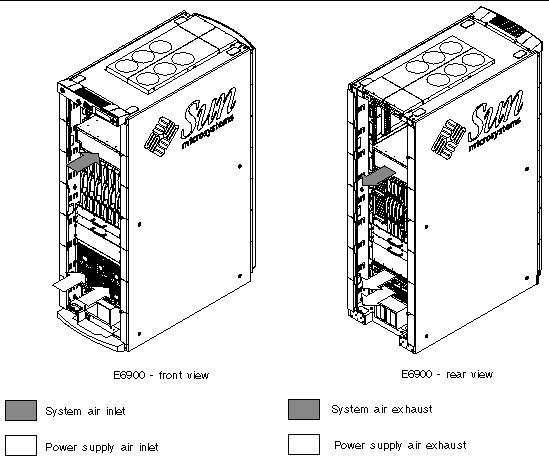| C H A P T E R 3 |
|
Environmental and Electrical Specifications |
The design of your environmental control system--such as computer room air-conditioning units--must ensure that intake air to the server system complies with the limits specified in this section.
The air intake screens act as electro-magnetic interference (EMI) and radio frequency interference (RFI) filters, stopping both EMI and RFI emissions from the system. These screens are a honeycomb-type screens, which also collect and trap dust and debris particles.
The Sun Fire E6900/E4900 systems have been designed for maximum availability. Air intake screens can be cleaned or changed without the need to power off the system.
The Sun Fire E6900/E4900 system's air intake screens require periodic inspection and cleaning. To prevent restricted airflow and possible equipment failure, the air intake screens should be inspected for debris and trapped particles every three months of operation. The level of debris found on the screens and surrounding area should be considered in the decision of when to remove and clean the air intake screen.
The environmental limits for Sun Fire E6900/E4900 systems are listed in Environmental Limits for Sun Fire E6900/E4900 Systems.
|
(Up to 7,000 ft (2134m) for UltraSPARC® IV+ 1.8 GHz CPU/Memory boards) |
|||
The operating environmental limits in Table 3-1 reflect what the systems have been tested to, in order to meet all functional requirements. The optimum operating condition in Table 3-2 is the recommended operating environment. Operating computer equipment for extended periods of time at or near the temperature or humidity extremes is known to significantly increase the failure rate of hardware components.
|
Note - In order to minimize any chance of down-time due to component failure, it is strongly recommended that customers plan and use the optimal temperature and humidity ranges. |
The ambient temperature range of 70°F to 74°F (21°C to 23°C) is optimal for system reliability and operator comfort levels. Most computer equipment can operate within a wide temperature range, but a level near 72°F (22°C) is desirable because it is easier to maintain safe associated relative humidity levels at this temperature. Operating in this temperature range provides a safety buffer in case the environmental support systems go down for a period of time. Though individual standards vary slightly, 70°F to 74°F (21°C to 23°C) should be used as an optimal recommendation.
The ambient relative humidity levels between 45% and 50% are the most suitable for safe data processing operations. Under certain circumstances, most data processing equipment can operate within a fairly wide environmental range (20% to 80%), but the optimal goal should be between 45% to 50% for several reasons:
Electrostatic discharge (ESD) is easily generated and less easily dissipated in areas where the relative humidity is below 35%, and becomes critical when levels drop below 30%. The 5% relative humidity range may seem unreasonably tight when compared to the guidelines used in typical office environments or other loosely controlled areas, but it is not so difficult to maintain in a data center because of the high efficiency vapor barrier and low rate of air changes normally present.
To prevent catastrophic failures, the design of your power system must ensure that adequate power is provided to your Sun Fire system. Use dedicated AC breaker panels for all power circuits that supply power to your system. Electrical work and installations must comply with applicable local, state, or national electrical codes.
Provide a stable power source, such as an uninterruptible power system (UPS), to reduce the possibility of component failures. If the computer equipment is subjected to repeated power interruptions and fluctuations, it is susceptible to a higher component failure rate than it would be with a stable power source. Every Sun Fire system requires its own customer-supplied circuit breaker and AC receptacle for each power cord.
Each power cord will also supply your system with proper earth ground. Sun has tested both Sun Fire E6900 cabinets and Sun Fire cabinets for radiated and conducted emissions and have determined there is no difference in emissions with or without a ground strap grounding the cabinets. No additional earth grounding is necessary but, it may be added if desired.
The Sun Fire E6900 system has dual Redundant Transfer Units (RTUs) with four Redundant Transfer Switches (RTSs). Two totally independent AC power sources are needed for input power redundancy. The AC power sources must be derived from independent power company utility feeds and Sun recommends that each be backed up with an on-line UPS. The power sources are not independent if they are only distinguished by having separate circuit breakers. One RTS hooked to an AC power source and the second RTS hooked to a UPS that is connected to the same AC power source is not supported because when the UPS is by-passed for maintenance both RTSs will be hooked up to the same source. If both RTSs are hooked to one utility feed then both lines must be backed up with on-line UPSs to ensure input power redundancy.



|
Caution - Connecting the alternate RTS units to outlets that use the same power source as the default RTS units is not supported and will adversely affect reliability. |


|
Caution - Connecting the alternate RTS unit to an outlet that uses the same power source as the default RTS unit is not supported and will adversely affect reliability. |

Every piece of support equipment requires its own customer-supplied circuit breaker and receptacle(s).
This section provides guidelines and requirements for cooling your Sun Fire systems. For electrical and cooling specifications, see the following tables:
Be aware of the following system cooling rules and guidelines:
|
Note - The following power numbers are maximums and are based on fully configured systems. Actual numbers might vary according to your system configuration. |
|
4 - NEMA L6-30P for 200-240 VAC[1] |
||
|
4 - NEMA L6-30R for 200-240 VAC[2] |
|
3 - NEMA 6-15P for 200-240 VAC[3] |
||
|
3 - NEMA 6-15R for 200-240 VAC[4] |
|
NEMA L6-30P for 200-240 VAC[5] |
||
|
NEMA L6-30R for 200-240 VAC[6] |
These guidelines are intended to assist those who would install the Sun Fire
E6900/E4900 systems at the end users' site. These guidelines address cooling issues only.
It is the ultimate responsibility of the end user to ensure that the environment in which these systems are mounted meet the following:


Copyright © 2006, Sun Microsystems, Inc. All Rights Reserved.